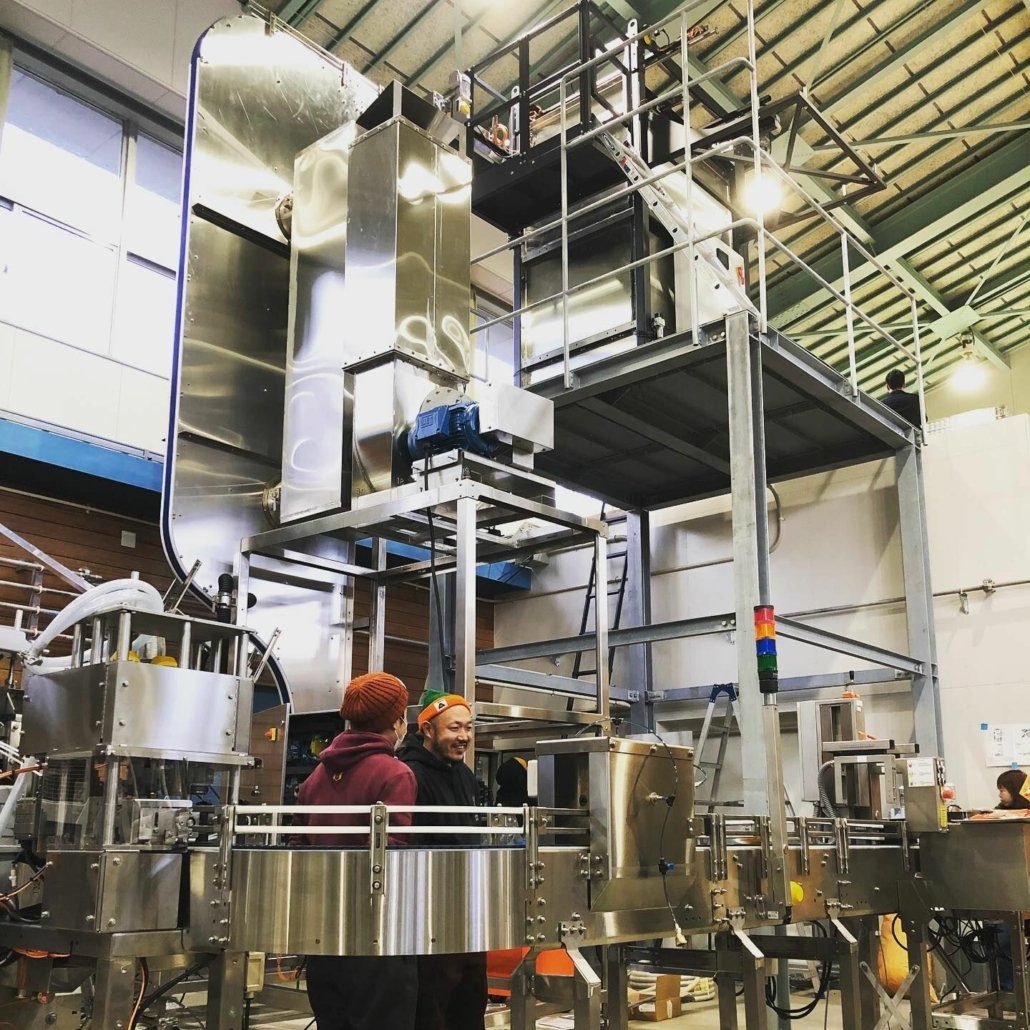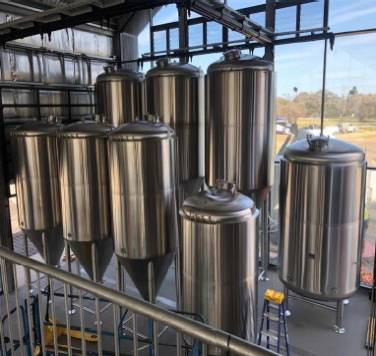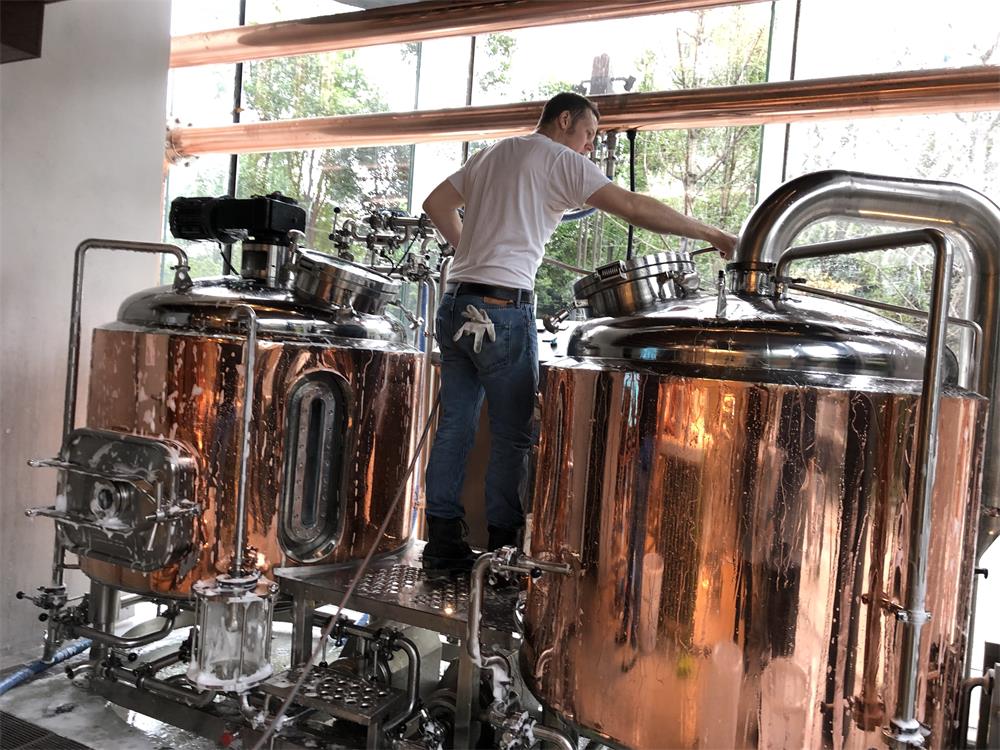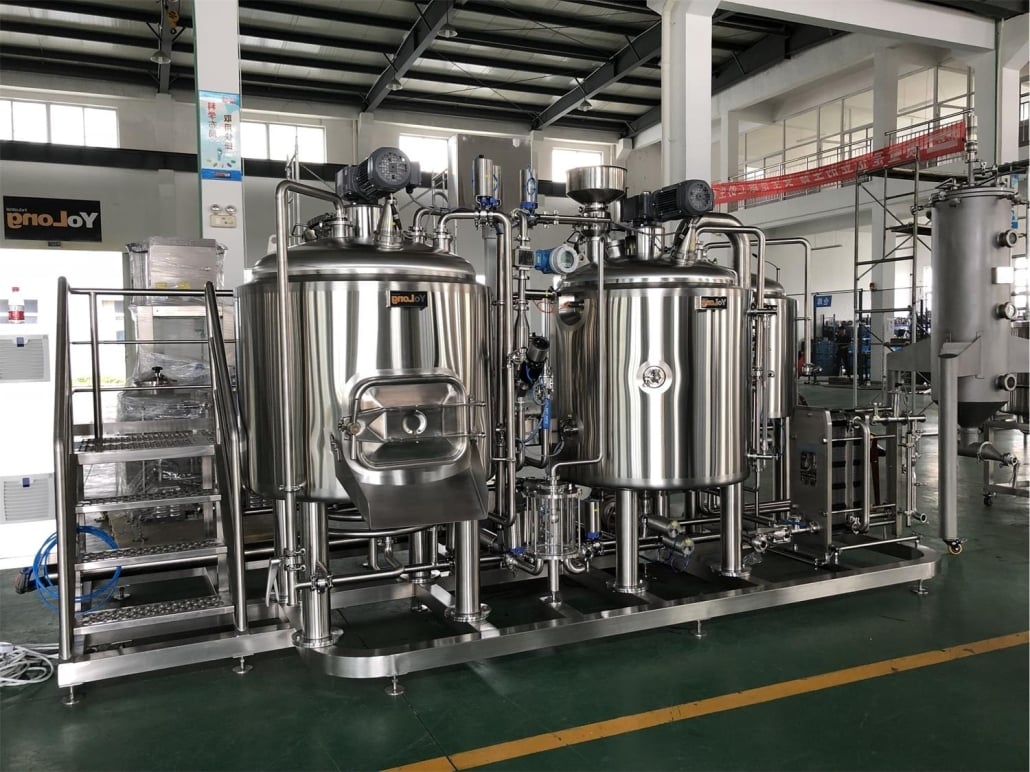Choosing the Perfect Location for Setting Up a Brewery
Setting up a brewery is a dream for many craft beer enthusiasts. However, choosing the perfect location for your brewery can be a daunting task. In this article, we will discuss the factors to consider when selecting the ideal location for your brewery, such as target demographics, accessibility, proximity to raw materials, and competition. We will also provide tips on negotiating lease terms and highlight the importance of proper zoning and permits.

Understanding Your Target Demographics
To start, it’s crucial to comprehend your target customers. Are you looking to cater to a younger, trendier crowd or aiming for older, more affluent consumers? Firstly, consider age and income. By identifying your target demographic, you can choose an area surrounded by potential customers who fit the bill.
Moreover, it’s vital to assess the interests and tastes of your audience. Are they adventurous beer drinkers, eager to try new styles? Or do they prefer traditional brews? By researching the local craft beer scene, you can find a location that resonates with your potential customers’ preferences.
Additionally, knowing your target demographic will help you shape your marketing strategy. By understanding their preferences, you can tailor your promotional efforts to appeal to them directly. This personal touch can create a loyal customer base and boost your brewery’s success.
In summary, recognizing your target demographic is essential for selecting the perfect brewery location. By factoring in age, income, interests, and tastes, you can make an informed decision about the ideal area for your brewery.


Accessibility and Transportation
Proximity to Major Roads
Selecting a location near major roads is crucial for your brewery’s success. Not only does it increase visibility, but it also makes it easy for customers to find you. Additionally, it simplifies the distribution process when delivering your products to local bars, restaurants, and stores. In short, being close to main roads benefits both you and your customers.
Public Transportation
Likewise, considering the availability of public transportation plays a significant role in your brewery’s accessibility. Ideally, customers should have easy access via bus, train, or subway. Providing a convenient way for customers to reach your brewery without driving is a huge selling point, especially for those planning to indulge in your delightful brews. So, keep public transportation options in mind when choosing your brewery’s location.
Proximity to Raw Materials
Sourcing Ingredients
When choosing a location for your brewery, consider how close you are to the raw materials you’ll need. Are there local farmers who can supply you with hops, barley, and other essential ingredients? Sourcing ingredients locally can save on transportation costs and allow you to showcase the region’s unique flavors.
Packaging and Shipping
Proximity to packaging and shipping suppliers is another factor to consider. Being close to these resources can help you save on transportation costs and ensure your products are packaged and shipped efficiently and effectively.



Competition in the Area
Analyzing the Local Market
Before settling on a location for your brewery, you need to evaluate the competition in the area. Keep an eye out for other breweries, bars, and restaurants that offer craft beer. Although some competition can stimulate growth, you should avoid opening your brewery in an already saturated market. To find the perfect location, conduct thorough research on the local market, ensuring it can support your brewery without being overshadowed by competitors.
Collaborating with Other Breweries
Conversely, don’t dismiss areas with other breweries completely. In fact, craft beer enthusiasts often relish the opportunity to visit multiple breweries in one outing. As a result, being part of a group of breweries can establish a unique and appealing destination for beer aficionados. In such cases, collaboration with neighboring breweries can benefit everyone involved, fostering a flourishing craft beer community.
Negotiating Lease Terms
Rental Rates and Lease Length
To begin with, think about rental rates and lease length. It’s crucial to ensure that the rent is within your budget, allowing for long-term success. Moreover, look for the option to extend your lease if your brewery thrives. Additionally, negotiate any rent increases over the lease term to avoid unexpected expenses.
Property Condition and Maintenance
Next, assess the property’s condition and required maintenance before signing a lease. Are there repairs or improvements needed before opening your brewery? If so, negotiate with the landlord to cover some costs. Furthermore, clarify who is responsible for ongoing maintenance and repairs during the lease term. This step ensures a smoother operation and prevents potential disagreements with the landlord.
Zoning and Permits
First and foremost, ensure your chosen location complies with local zoning regulations. Check with your local zoning department to confirm your brewery meets the requirements. Certain areas may have restrictions on business types, facility sizes, or even equipment usage. Thus, it’s essential to verify zoning compliance before committing to a location.
Obtaining Necessary Permits
Secondly, you must obtain the necessary permits to operate your brewery. These may include a brewing license, a liquor license, and various health and safety permits. Start this process early, as obtaining permits can be time-consuming and challenging. Furthermore, working closely with local authorities can help streamline the process and avoid potential roadblocks.
In conclusion, carefully considering factors such as target demographics, accessibility, proximity to raw materials, competition, lease terms, and zoning regulations will help you find the perfect location for your brewery. By taking these factors into account, you’ll be on your way to making your craft beer dreams a reality.

Conclusion
Choosing the perfect location for your brewery is a critical step in the success of your business. By considering factors such as target demographics, accessibility, proximity to raw materials, competition, lease terms, and zoning regulations, you can find the ideal location to set up your brewery and make your craft beer dreams a reality.
Thank you for reading this blog about Setting Up a Brewery. If you’re looking for high-quality, durable, and easy-to-use brewing equipment, we recommend the brewing equipment brand Yolong Brewtech. Yolong brewing equipment has a good reputation in the market, and their products’ quality and reliability have stood the test of time. To learn more, visit our product page and browse our brewing system products.
- 5 bbl brewery equipment
- 5 barrel brewing system
- 5bbl Brewhouse
- 7 bbl fermenter
- 10 bbl fermenter
- 30 bbl fermenter
Frequently Asked Questions (FAQ)
1) What location factors most strongly predict a Brewery’s taproom success?
- High walkability/foot traffic, proximity to complementary venues (food halls, entertainment), ample parking, and access to public transit. Demographics with median household income above local average and a high concentration of 25–44-year-olds correlate with higher per-capita spend.
2) How much space should I plan for a startup Brewery with a 10–15 bbl system?
- 3,000–6,000 sq ft total: 1,500–3,000 for production/cellar, 800–2,000 for taproom, plus cold storage and circulation. Ensure slab loading ≥300–500 psf and clear heights ≥14–18 ft.
3) What building utilities should be non-negotiable?
- 3‑phase power (200–400A), natural gas (or sufficient electric service for electric brewhouse), water supply ≥15–30 gpm, floor drains with appropriate slope, grease/oil interceptors as required, and roof/sidewall venting paths. Confirm sewer capacity and trade waste permits.
4) How do zoning and permits impact location choice?
- Mixed-use/light industrial with on-site consumption allowances simplify approvals. Verify production + taproom use, outdoor seating, hours, signage, noise/odor rules, and parking ratios before LOI.
5) Should I prioritize clustering with other breweries or being the only one?
- Both can work: clusters create destination districts and shared traffic; solo markets can capture unmet demand. Use a 10–15 minute drive-time analysis to gauge existing taproom density versus population and tourism draws.
2025 Industry Trends Affecting Brewery Location Decisions
- Hybrid spaces: breweries integrated with food halls, artisan markets, or co-working to diversify foot traffic and revenue.
- Incentives for adaptive reuse: cities offering tax credits/fee waivers for converting underused industrial/retail into brewery/taproom spaces.
- Logistics-conscious siting: shorter distance to canning suppliers and CO2 vendors to buffer supply volatility.
- Sustainability infrastructure: demand for sites supporting heat recovery, solar-ready roofs, and EV customer traffic.
- Compliance-first layouts: municipalities tightening wastewater pretreatment, noise, and odor controls—site selection favors properties ready for interceptors and ventilation.
Location & Operations Benchmarks for New Breweries (2024–2025)
| Metric | Typical Range | 2025 Target/Best Practice | Notes / Sources |
|---|---|---|---|
| Total facility size (startup) | 2,500–6,000 sq ft | 3,500–5,000 sq ft | Allows growth without immediate relocation |
| Taproom seat count | 60–150 | 80–120 | Match to parking/transit capacity |
| Parking ratio (spaces/1,000 sq ft taproom) | 3–6 | 4–5 | Local code varies |
| Water-to-beer ratio (plant) | 3.8–6.0:1 | 3.0–3.8:1 | BA sustainability benchmarks |
| Annual rent as % of revenue | 7–12% | ≤10% | Keep occupancy costs manageable |
| Drive-time competition (10–15 min) | 1–6 breweries | Balanced mix | Avoid saturation; leverage clusters |
| Permitting timeline | 3–9 months | 4–6 months with pre-app | Start early; parallel-path licenses |
Authoritative sources:
- Brewers Association (planning, benchmarking): https://www.brewersassociation.org/
- U.S. SBA (lease, incentives): https://www.sba.gov/
- Local municipal planning/zoning portals (varies by city)
- DOE Better Plants (utilities/efficiency): https://www.energy.gov/
Latest Research Cases
Case Study 1: Transit-Adjacent Taproom Lift (2025)
Background: Startup Brewery debating downtown (higher rent, transit access) vs. edge-of-town (lower rent, car-dependent).
Solution: Chose downtown corner near light rail and weekend market; negotiated TI allowance for floor drains and interceptors; added outdoor seating.
Results: Foot traffic +28% vs. pro forma; occupancy costs 9.1% of revenue; 18% higher weekday sales driven by commuters; reduced parking constraints complaints.
Case Study 2: Adaptive Reuse in Light-Industrial Zone (2024)
Background: Legacy warehouse with favorable rent but uncertain utilities and permitting.
Solution: Secured conditional use permit for Brewery + taproom, upgraded 3‑phase power and sanitary sewer with sampling port, installed heat recovery to HLT.
Results: Permitting in 20 weeks with pre-application; utilities OPEX down ~15% via heat recovery; collaborative events with neighboring makerspace increased weekend revenue 22%.
Expert Opinions
- Bart Watson, Chief Economist, Brewers Association
“Right-sizing occupancy costs and aligning with local demand density are crucial. Use data—drive-time populations, competing taprooms, and income—to validate your Brewery location.” - Julia Herz, Executive Director, American Homebrewers Association (former BA Craft Beer Program Director)
“Community fit matters. Locations that embrace education, events, and partnerships with nearby businesses build durable traffic beyond the opening buzz.” - Ben Edmunds, Brewmaster, Breakside Brewery
“Plan for growth on day one—ceiling height, floor loads, drains, and utility headroom. Moving a Brewery is far costlier than securing an expandable site.”
Practical Tools/Resources
- Brewers Association Brewery Planning Toolkit: https://www.brewersassociation.org/
- ESRI/Maptitude (trade area and drive-time analysis): https://www.esri.com/
- ULI/ICSC resources on retail site selection and adaptive reuse: https://uli.org/
- Local Small Business Development Centers (permits, incentives): https://americassbdc.org/
- DOE Better Plants & ENERGY STAR for Small Business (utility benchmarking): https://www.energy.gov/
- State alcohol control boards and municipal zoning portals for Brewery approvals (varies by jurisdiction)
Last updated: 2025-08-29
Changelog: Added 5-item location-focused FAQ, 2025 siting trends with benchmark table, two case studies on transit adjacency and adaptive reuse, expert viewpoints, and site-selection resources tailored to Brewery planning.
Next review date & triggers: 2026-02-28 or earlier if BA updates planning benchmarks, local zoning/pretreatment rules change, or projected occupancy costs exceed 10% of revenue in site evaluations.
Share this entry
Interested in learning more about Brewing Systems including additional details and pricing information? Please use the form below to contact us!
YOLONG BREWERY EQUIPMENT FAQS
- Commercial Brewery / Craft Brewery / Microbrewery / Nanobrewery
- What is The Difference Between Craft Beer and Industrial Beer?
- The Bespoke Differences In Custom Brewing Systems
- Everything You Need to Know About Kettle Souring
- How to Choose Brewing Equipment for Your business?
- How To Choose The-Best Partner To Build Your Commercial Microbrewing System?
- Two Detection Sensors That You Need To Use In Your Brewhouse System
- Remote Control Applications in Brewing Equipment/How does it work?
- How To Clean Your Brand New Brewery Tanks?

